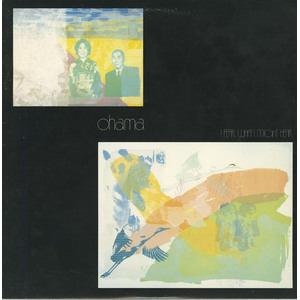Ohama (Tona Walt Ohama)
Websites:
https://ohama.bandcamp.com/music, https://www.facebook.com/TonaOhama/
Origin:
Brooks → Rainier → Calgary, Alberta, 🇨🇦
Biography:
Tona Walt Ohama was born in Brooks, Alberta, and raised on a potato farm near Rainier, where his Japanese-Canadian parents settled after the Second World War. His father, Tono Ohama — born in Calgary in 1912 — built what became one of the largest potato operations in Western Canada, complete with its own chip brand and processing factory. Walt was named partly after family friend Walter Kraft, the chairman of Safeway Canada. The home was hardworking, disciplined, and filled with music; his father was a country singer who could yodel like Jimmie Rodgers and loved Hank Williams and Merle Haggard.
Despite the demands of farm life, the household embraced technology early — colour televisions, quadraphonic records, and new gadgets arrived regularly, giving Walt an early fascination with sound, machinery, and electronics. By age twelve he was operating a potato harvester alone, surrounded by motors, tools, and equipment whose textures and timbres would later surface in his recordings.
In that environment, music became an escape — first through his sisters’ records, then through the tractor radio, where he heard Elton John, Jethro Tull, and the progressive rock that opened a world far beyond the prairie horizon. As a teenager he wandered into a music store and encountered an ARP Axxe synthesizer. Its sound was unlike anything he had heard. He bought it immediately, without knowing how to use it. Around the same time, a friend introduced him to Kraftwerk, Brian Eno, and eventually John Foxx’s Metamatic, which convinced him that one person, alone with machines, could build entire sonic worlds.
After brief studies in engineering and art at the University of Calgary, Ohama returned to the family farm and converted the basement into a studio. There, beneath the fields, he began recording obsessively with synthesizers, tape machines, drum boxes, and found sounds — farm equipment, wind, voices from radio and television. His debut, Midnite News (1982), circulated through college radio and tape-trading networks, followed by I Fear What I Might Hear and a series of independent releases that introduced his distinctive blend of melody, atmosphere, and wry observations about technology and modern life.
By the mid-1980s, his presence was felt in Canada’s underground electronic community. CFNY championed his singles, a homemade video reached MuchMusic, and he was nominated for Best Independent Artist at the CASBY Awards. Though some urged him toward the mainstream, he rejected label overtures, preferring complete control over his work. Independence mattered more than exposure.
The late 1980s and early 1990s brought turbulence. After a period of intense creativity came a collapse into depression, during which he isolated himself in the farmhouse basement and nearly abandoned music altogether. Letters from old friends helped pull him through. He resurfaced gradually, recorded new material, and continued shaping an identity built on small-scale, self-contained work. But the pressures of the time led him to withdraw again, and for years he lived quietly, working in graphic design, industrial video, and various jobs that kept him out of the public eye — including a period as a street sweeper in downtown Calgary.
Interest in his early recordings grew internationally in the 2000s through cassette collectors, blogs, and minimal-wave reissues. A reassessment of his early work revealed how far ahead of the curve he had been, operating alone in rural Alberta while unknowingly contributing to a global lineage of minimal synth and DIY electronic music.
His full return arrived in 2010, sparked by a coworker who described a dream in which she heard a two-note bell tone she believed he was meant to create. The sound became the seed of a new period of work, pushing him into ambient composition, multi-speaker installations, and a renewed engagement with voice and collaboration. Over the decade that followed he produced large-scale soundscapes, reinterpretations of progressive classics, vocal projects with singer-songwriters, and expansive electronic suites that bridged his early style with new possibilities.
He eventually settled into a small studio apartment in downtown Calgary, where he continues to work surrounded by books, records, Christmas lights, and the ARP Axxe that began it all. His wife, Mia, lives in the apartment beside him and appears regularly in his creative life. His son, Tona Michael — born when Walt was seventeen — is now an artist in his own right.
As he entered his sixties, Ohama began reflecting on his legacy, revisiting unreleased material and ensuring his recordings were preserved. His catalogue spans farmhouse experiments, landmark synth-pop, collaborations, ambient installations, and a steady stream of new work created in the most modest of spaces.
Throughout his life, Ohama has held to a simple belief: interesting recordings will find their audience if they are honest and made with care. From a basement under a potato field to a tiny room in downtown Calgary, his work has remained intensely personal, quietly innovative, and unmistakably his — shaped by solitude, curiosity, and a lifetime spent listening closely to the world around him.
-Robert Williston













